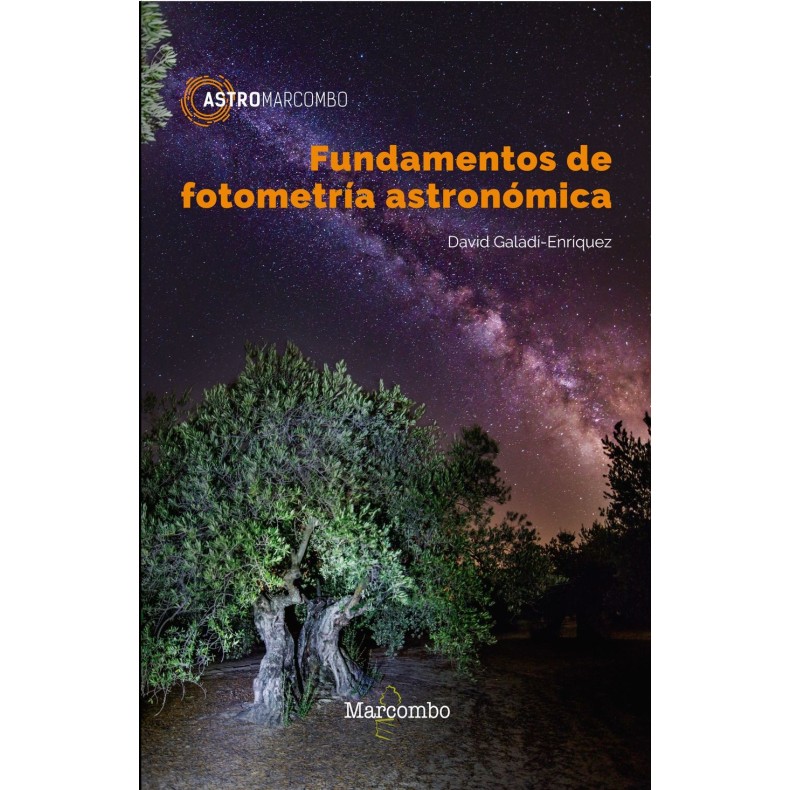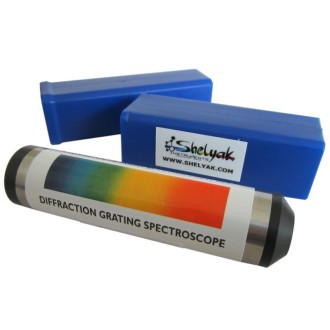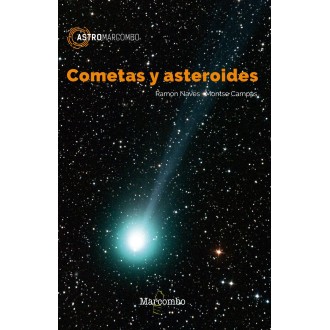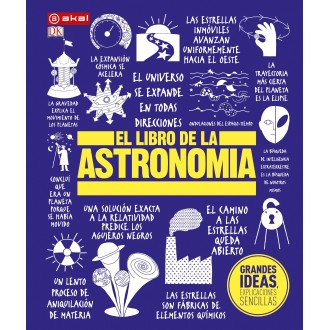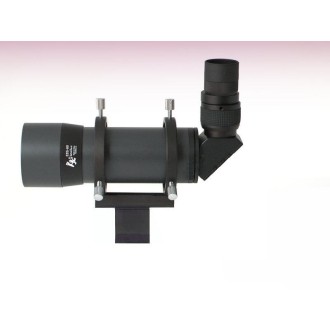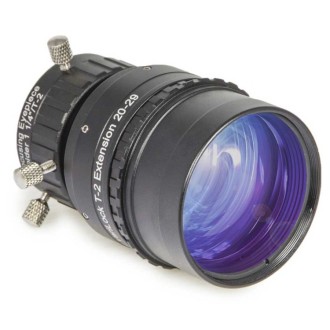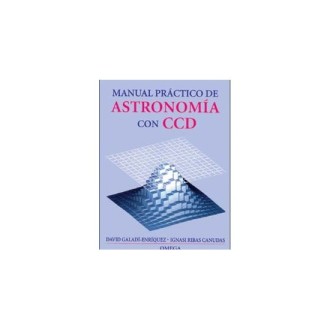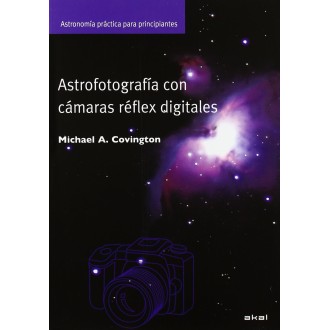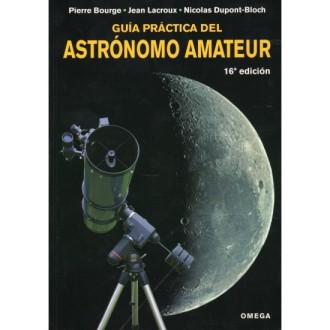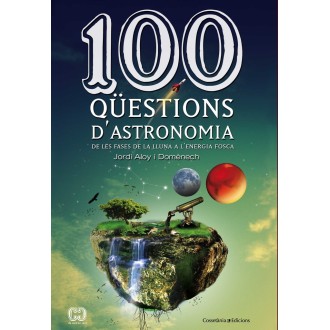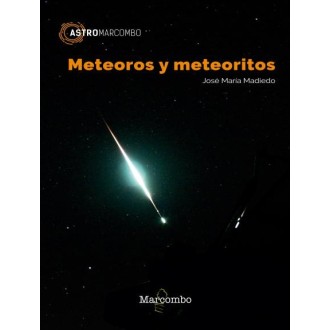
Fundamentals of Astronomical Photometry Book
Fundamentals of astronomical photometry provides the order and the necessary excipients to assimilate the key concepts and techniques of this astronomical discipline, with special attention to the realities of the non-professional astronomical community
| Carrier | Description | Estimated Delivery | ||
|---|---|---|---|---|
 |
Home delivery - International | Home delivery - International |
Wednesday, 14 January - Wednesday, 21 January |
|

Home delivery - International
Home delivery - International
Estimated delivery:
Wednesday, 14 January - Wednesday, 21 January
Fundamentals of astronomical photometry.
The objective of astronomical photometry is to measure the brightness and color of the stars. Modern technology offers powerful resources: prodigious telescopes, digital cameras, data processing programs, information and communication systems... Many people interested in practical astronomy already have all these resources at their disposal, although they may only use them to take attractive images and share them. Why not apply the same tools to obtain data on the brightness and color of the stars for scientific, educational or informative purposes? If we have the instruments and the interest, all we need is the attentive, detailed, progressive, practical and friendly guidance that this book offers us.
Fundamentals of Astronomical Photometry provides the order and the necessary ingredients to assimilate the key concepts and techniques. With attention to the realities of the non-professional astronomical community, this book doses the essential mathematics to be well digested by anyone with a high school education, unifies notation and terminology, destroys misconceptions, provides rigorous information, and manages it all in a sequence that is readable, interesting, and not without a sense of humor.
An ideal work to get started in astronomical photometry from scratch, oriented to the practice of obtaining data, and incorporating didactic and informative elements that will make it attractive as a resource in the teaching of physics and mathematics.
David Galadí-Enríquez (Córdoba, Spain, 1969) began his astronomical career in the local association of his hometown, and completed his specialized training by studying physics at the universities of Granada and Barcelona. In the latter he wrote his doctoral thesis on astrometry and photometry of stellar clusters and worked for some years as an associate professor. He then worked as a researcher at the Center for Astrobiology (CSIC-INTA) and at the Institute of Astrophysics of Andalusia. He is currently resident astronomer at the German-Spanish Astronomical Center, better known as Calar Alto Observatory. Very active in popular science, he is the author or co-author of almost a dozen books, including technical, educational and popular science works.
Technical specifications:
- TITLE: Fundamentals of Astronomical Photometry
- AUTHOR: David Galadí-Enríquez
- PAGES: 218
- ISBN: 9788426725769
- YEAR: 2018
- EDITION: 1
- FORMAT: 15x23 cm.
- BINDING: Paperback with flaps
- COLLECTION: ASTROMARCOMBO
- COLOR
Addressed to:
- Amateur astronomers
- Professional astronomers
- Scientists
- Astronomy and space science enthusiasts
- Secondary school teachers
- University professors
- Science baccalaureate students
- University students
Table of contents:
- Introduction IX
- 1. The brightness of the stars ...........................................................................1
- 1.1. Stars emit light ....................................................................1
- 1.2. We receive light from the stars ........................................................... 3
- 1.2.1. Sunlight on Earth ..............................................................3
- 1.2.2. Starlight over the Earth ..............................................................4
- 1.2.3. Singing in the photon rain ............................................5
- 1.3. Spectra ................................................................................... 8
- 1.3.1. Black bodies of all colors .......................................8
- 1.3.2. Some very spectral guys are coming ...............................10
- 1.4. Filters ....................................................................................... 13
- 1.4.1. The transmission curve ................................................................ 14
- 1.4.2. Through the center and along the bands ...................................................15
- 1.4.3. Types of filters ...........................................................................16
- 1.4.4. The fundamental problem of astronomical photometry ................ 16
- 2. The measurement of brightness in astronomy ...................................................... 19
- 2.1. Two thousand years looking at the sky ............................................................19
- 2.2. The magnitude becomes quantitative .............................................. 20
- 2.2.1. Pogson put it up ......................................................................... 21
- 2.2.2. Logarithms over here, logarithms over there ......................................22
- 2.2.3. The fundamental equation ..............................................................24
- 2.2.4. Dancing to the beat of 5/2 .................................................................29
- 2.2.5. Extravagant company: from acoustics to chemistry ................... 32
- 2.3. The spectral sensitivity of the human eye and the V filter ......................33
- 2.4. A world of color ........................................................................35
- 3. Light and color in space ......................................................................39
- 3.1. Light and distance: absolute magnitudes and distance moduli ....... 39
- 3.1.1. Dilution of magnitudes ...............................................................39
- 3.1.2. The astronomical unit and the parsec .........................................40
- 3.1.3. Absolute magnitude and distance modulus ...........................42
- 3.1.4. Examples .................................................................................44
- 3.1.5. Photometry in times of light ............................................... 47
- 3.1.6. The Solar System at all ..................................................48
- 3.2. Absorption: the interstellar extinction ........................................... 49
- 3.2.1. The Golden Age ........................................................................49
- 3.2.2. Interstellar medium and photometry ...............................................50
- 3.2.3. Encounters with Balmer on the staircase: emission and absorption ........54
- 3.3. Redshifts and blueshifts .............................................58
- 3.3.1. Doppler effect ......................................................................59
- 3.3.2. Cosmological redshift ......................................60
- 3.3.3. Your attraction makes me blush ............................................................ 61
- 4. Light and color in the atmosphere .................................................................63
- 4.1. The Earth's atmosphere and starlight: refraction ......................... 64
- 4.2. The Earth's atmosphere and starlight: extinction ...........................66
- 4.2.1. Extinction in a plane-parallel atmosphere: air mass ............67
- 4.2.2. Duel of titans: exponentials versus logarithms ................ 69
- 4.3. Turbulence: scintillation and blurring ..........................................73
- 4.3.1. Scintillation ...............................................................................73
- 4.3.2. Blurriness or seeing ................................................................. 74
- 4.4. A good place for observation .................................................. 77
- 5. The detectors.................................................................................... 79
- 5.1. CCD cameras: basic principles ..............................................80
- 5.1.1. Photoelectric effect ................................................................... 81
- 5.1.2. The latent image and its reading ...............................................83
- 5.1.3. Pixel Capacity and Linearity ............................................84
- 5.1.4. Analog to digital conversion: gain and read noise ........85
- 5.1.5. How many bits your camera is: the dynamic range .................85
- 5.1.6. Electronic polarization or bias ........................................... 86
- 5.1.7. Astronomy in an olive grove: the dark current ... 87
- 5.1.8. Go, the doughnuts!: uniformity of the detector .............................88
- 5.1.9. Stranger things: lightning, evil pixels and shutters ...........89
- 5.2. Basic processing of images .........................................91
- 5.2.1. Subtraction of electronic polarization ............................. 91
- 5.2.2. Subtraction of the dark current .............................. 93
- 5.2.3. Flattening of the field ...........................................................94
- 5.2.4. Correction of scientific images .................................97
- 5.3. Instrumental measurement and signal-to-noise ratio ....................... 98
- 5.3.1. Measuring in the rain: Poisson statistics ........................99
- 5.3.2. Non-Poissonian noises ..........................................................101
- 5.3.3. The paradox of perfect measurement .................................... 101
- 5.3.4. Signal-to-noise ratio ..............................................................102
- 5.3.5. Get on a (photon) diet .............................................105
- 5.4. Image scale and pixel size: spatial sampling ...107
- 6. Basic photometry ............................................................................111
- 6.1. The elementary measurement ................................................................. 111
- 6.1.1. Where is the star? ..........................................................112
- 6.1.2. Squaring circles ............................................................ 113
- 6.1.3. A crown to have a good background ..................................... 116
- 6.1.4. The uncertainty of instrumental measurement .......................... 118
- 6.2. Differential photometry with CCD ............................................120
- 6.2.1. Differential photometry .......................................................... 120
- 6.2.2. Considerations on the synthetic opening ..........................124
- 6.2.3. To infinity and beyond .................................................132
- 6.2.4. Hands on: customs and tips ................................134
- 6.2.5. Catalog and measurement: internal and external uncertainties ...139
- 6.3. Practical examples ...................................................................1 ...................................................................1
- 6.3.1. Light curves of variable stars ...................................140
- 6.3.2. Novae and supernovae .............................................................. 145
- 6.3.3. Rotation of asteroids ............................................................1 ............................................................1
- 6.3.4. Drifting photometry: occultation of stars by asteroids ..152
- 6.3.5. Extreme differential precision: exoplanet transits ..........154
- 7. Advanced photometry...................................................................... 157
- 7.1. Photometric systems ...............................................................157
- 7.1.1. The filters of the photometric system ......................................157
- 7.1.2. The photometric catalog .......................................................... 159
- 7.1.3. The Zero Point ......................................................................160
- 7.2. Three photometric systems ........................................................161
- 7.2.1. The Johnson-Cousins UBVRI system ............................... 161
- 7.2.2. Sloan's ugriz system ...................................................... 166
- 7.2.3. Strömgren's uvby system .......................................... 169
- 7.2.4. Catalogs for these three systems ..................................170
- 7.3. Absolute photometry ............................................................... 172
- 7.3.1. Absolute elemental photometry ........................................ 173
- 7.3.2. Complete models of broadband absolute photometry ..176
- 7.3.3. Possible additional refinements ...................................181
- 7.3.4. Models for intermediate and narrow band photometry ......183
- 7.3.5. Hands on: customs and tips ...............................184
- 7.4. Photometry of large objects ......................................... 187
- 7.4.1. Magnitudes per square arc second ........................187
- 7.4.2. Surface measurements in practice ..................................189
- 7.4.3. Light pollution measures ................................ 191
- 7.5. A couple of practical examples ............................................ 193
- 7.5.1. Elemental model: sky brightness in the V-band ..................194
- 7.5.2. Full broadband model: color-magnitude diagram..196
- Bibliography ........................................................................................ 199
- Alphabetical index .................................................................................203
Fundamentals of astronomical photometry.

